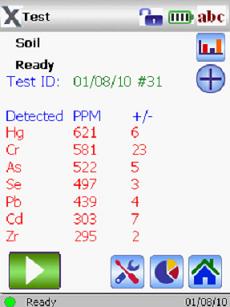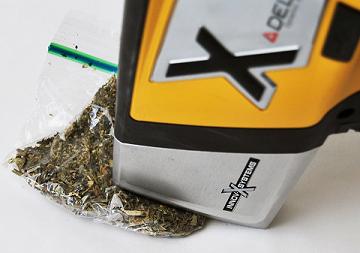The DELTA Quickly and Easily Checks for Toxic Heavy MetalsThe use of medical marijuana has increased over the last decade. Since 1996 when California first legalized marijuana for medicinal purposes, thirteen other states have legalized it and another dozen are considering similar bills. Additionally, the US Department of Justice said that it would no longer pursue cases against medical marijuana patients and suppliers who are abiding by state laws. Medical marijuana has since become a sizable part of the economy and significant cash crop for several states. Frequently patients who use marijuana for medicinal purposes have low resistance and do not need to introduce toxic substances that could further jeopardize their health. Unfortunately, there is a potential of heavy metal exposure with the use of marijuana from cultivating the plant itself, its commercialization, and its intake methods. The primary sources of heavy metals in medical marijuana are well known and can be easily tested with handheld XRF. |
Cultivation of MarijuanaSoils used for growing marijuana outdoors are frequently in peri-urban locations or near abandoned industrial and mining sites. Consequently, the presence of pollutant metals such as lead (Pb), chromium (Cr), arsenic (As), and cadmium (Cd) in the soil and water tend to be more pervasive. Certain locales have been found to introduce specific contaminants such as high levels of mercury (Hg) in a particular island brand, excessive sulfur (S) in plants cultivated near a paper mill or coal furnace, and even high levels of uranium (U) in regional phosphate fertilizers. Cultivation soils used indoors can also present problems especially if non-certified fertilizers and/or pesticides containing Pb or As are used. To compound these issues, plants from the cannabidaceae family have been found to be very promising for phytoremediation, the practice of planting species over a polluted site to remediate via their efficiency in "taking up" pollutant metals during growth. Simply put, the cannabidaceae plant family has a reputation for absorbing metals quickly during cultivation. |  DELTA Handheld XRF Rear Facing Screen Shows Clear Results for Heavy Metal Tests |
Commercialization
As marijuana is a commodity typically sold by weight, some street dealers have been known to deliberately "lace" product to increase its weight. Pb is commonly used for this and in excess amounts is visible due to its consistency and white color. But, at $200+ per ounce, it does not take visible amounts of Pb to increase the weight and subsequent cost to the consumer. Dealers will even mix marijuana with tobacco to reduce the obvious taste of Pb. The danger to one's health from this practice is apparent.
Heavy Metal Testing
Handheld XRF is a well documented and valuable tool for regulatory driven analysis of metals in soils and consumer products. This non-destructive method, with its quick analysis time and high quality measurement capability, make it ideal for testing the potential sources of toxic heavy metals found in medical marijuana use.
|
Element
of Interest |
DELTA Premium
3-Beam Soil Ta/Tu Tube, SDD |
DELTA Classic
3-Beam Soil Au Tube, SiPiN |
| P | 500 - 700 | 1 - 5% |
| S | 100 - 250 | 0.1 - 0.5% |
| Ti | 7 - 15 | 20 - 50 |
| Cr | 5 - 10 | 10 - 30 |
| Ni | 10 - 20 | 20 - 40 |
| Cu | 5 - 7 | 15 - 30 |
| Zn | 3 - 5 | 10 - 15 |
| As | 1 - 3 | 4 - 8 |
| Se | 1 - 3 | 4 - 8 |
| Sr | 1 | 3 - 5 |
| Cd | 6 - 8 | 20 - 30 |
| Sn | 11 - 15 | 30 - 40 |
| Sb | 12 - 15 | 30 - 40 |
| Hg | 2 - 4 | 10 - 15 |
| U | 2 - 4 | 5 - 10 |
| Pb | 2 - 4 | 5 - 10 |
| Limits of Detection, reported in parts per million unless otherwise noted, are optimal. Measurements were taken in air for 20 seconds per beam. Standards used were in a clean, homogeneous Si02 matrix without interfering elements. | ||
DELTA Docking Station with Charger for 24/7 Operation





